HTC One S Review - International and T-Mobile
by Brian Klug on July 17, 2012 9:30 AM ESTAt the very top of HTC’s new lineup are three flagship devices: the One X, its cousin the One XL, and the One S. I say flagship because HTC’s One S is really a device with a level of fit and finish beyond the rest of the high-end to midrange device category. Don’t let its diminutive size and 4.3" display fool you, the One S packs a lot of punch. It’s almost funny to write it, but the T-Mobile One S has been the device I’ve been reaching for more often than a few other larger size phones for a while now. For those wanting a device with arguably the best in-hand feel around, and an outline that isn’t large like the norm, the One S might make more sense than the One X.
First off, the One S is internally very similar to the HTC One X (AT&T) or HTC One XL - it includes essentially the same dual core Snapdragon S4 Krait SoC at 1.5 GHz with 1 GB of LPDDR2 RAM. The only change is in cellular baseband, which gets reflected in the SoC’s name (MSM8960 for connectivity including LTE, MSM8260A in the case of the One S for GSM/EDGE and dual-cell WCDMA).
Superficially, however, the One S is completely different from the One X. The One S eschews the unibody polycarbonate frame for a metal frame with a unique twist - it tapers and gets thinner at the center. Coming from so many devices that are shaped like a water droplet or sphere (and thus bulge out in the middle), holding the One S is almost shockingly different at first.
I’ve written before that I honestly think HTC won the industrial design category this time around - the One S is exhibit number one in my case for that argument. The combination of a Super AMOLED display and this unique metal construction helps the One S be very thin as well. It’s 7.8 mm at its thinnest point.
Up at the top and bottom are plastic soft touch inserts which double as RF windows for the One S. The one at the very top pops off to reveal the phone’s microSIM slot, IMEI number, and regulatory stickers. As usual HTC has its gold springs here which push and mate up with the antenna traces on the backside of the plastic - there’s WiFi, BT, GPS, and the WCDMA diversity antenna up here. This isn’t the first time HTC has used plastic elements that snap on or off as antennas before, either. The cover is easy to snap on and off, and there’s HTC’s trademark splash of color on the plastic exposed underneath. Note that just like the HTC One X, there’s no microSD card slot, so the 16 GB of onboard storage is what you get. That, and a sealed internal battery.
Up at the very top is the 3.5mm audio jack, secondary microphone port for noise cancelation on calls, and the standby/lock button. I have no complaints about the button placement or clickiness.
Like the One X, HTC has placed the microUSB port on the left side about three quarters of the way up the device, which means you can use the device portrait without having the USB plug get in the way of your hand. I also still suspect that like the One X, the PCB is in this upper region, leaving the bottom portion of the device entirely for battery.
The right side is home to the single piece volume rocker which I have no complaints about. It’s clicky and excellent.
The bottom is home only to the primary microphone port, which is on the plastic RF window region. Also in this region on the backside is the One S’ speakerphone grille, which is a grid of laser cut pinholes just like the One X.
On the front, we have the 4.3" SAMOLED display and three capacitive buttons (back, home, and the task switcher). Up at the top are the earpiece grille (again, pinholes) and behind this grille is the two-tone notification LED. At far right is the VGA front facing camera. I have no complaints with the fit and finish here, although the notification LED on the One S is likewise difficult to notice at a glance unless you’re aligned perfectly normal (in the angular sense) to the phone’s front surface.
The LED glows orange when charging and turns to solid green when fully charged, in addition to blinking green for other notifications. I will say that it’s rather unfortunate that the One X and One S have such hard to see notification LEDs. It’s even more puzzling because the One V has a positively excellent notification LED.
I guess that brings us to the backside, which again is rather unique with its center taper. The metallic frame is either subjected to HTC’s micro-arc oxidation process (if it’s black, like our International One S) or otherwise left untreated like the T-Mobile One S. There’s a difference in the texture between the two, but it isn’t super dramatic - the micro-arc oxidized International One S (which is black) feels somewhat coarser. Honestly, I find both of them very appealing when it comes to their in-hand feel.
The other best part is that because the One S is metal, I haven’t seen any of the plastic wearing or scuffing that I did with the One X. The device does rest planar with flat surfaces and make contact on the plastic regions, but because the surface is a more traditional soft touch finish the contact scuffs tend to buff out rather than become permanent fixtures like they do on the One X.
| Physical Comparison | ||||
| Samsung Galaxy Nexus (LTE) | Apple iPhone 4S | Samsung Galaxy S 3 (USA) | HTC One S | |
| Height | 135.5 mm (5.33") | 115.2 mm (4.5") | 136.6 mm (5.38" ) | 130.9 mm (5.15" ) |
| Width | 67.94 mm (2.67) | 58.6 mm (2.31") | 70.6 mm (2.78") | 65 mm (2.56") |
| Depth | 9.47 mm (0.37") | 9.3 mm ( 0.37") | 8.6 mm (0.34") | 7.8 mm (0.31") |
| Weight | 150 g (5.3 oz) | 140 g (4.9 oz) | 133g (4.7 oz) | 119.5g (4.21 oz) |
| CPU | 1.2 GHz Dual Core Cortex-A9 OMAP 4460 | Apple A5 @ ~800MHz Dual Core Cortex A9 | 1.5 GHz MSM8960 Dual Core Krait | 1.5 GHz MSM8260A Dual Core Krait |
| GPU | PowerVR SGX 540 | PowerVR SGX 543MP2 | Adreno 225 | Adreno 225 |
| RAM | 1 GB LPDDR2 | 512MB LPDDR2-800 | 2 GB LPDDR2 | 1 GB LPDDR2 |
| NAND | 32 GB NAND | 16GB, 32GB or 64GB integrated | 16/32 GB NAND with up to 64 GB microSDXC | 16 GB NAND |
| Camera | 5 MP with AF/LED Flash, 1080p30 video recording, 1.3 MP front facing | 8 MP with LED Flash + Front Facing Camera | 8 MP with LED Flash + 1.9 MP front facing | 8 MP with LED Flash + VGA front facing |
| Screen | 4.65" 1280x720 HD SAMOLED | 3.5" 640 x 960 LED backlit LCD | 4.8" 1280x720 HD SAMOLED | 4.3" 960x540 Super AMOLED |
| Battery | Removable 6.85 Whr | Internal 5.3 Whr | Removable 7.98 Whr | Removable 6.1 Whr |
I can’t emphasize enough how much I enjoy the form factor of the One S. In a world where it seems like every smartphone OEM is in a race to see just how big they can make their phones before people start either complaining or creating a niche market for clothing with oversized pockets, the One S is a refreshing lesson that sometimes size isn’t everything.
As an aside, it’s kind of wearing on me that so much of smartphone form factor discussion is purely about device size anymore. It’s superficial, and plus, what would Freud say?
Cases
HTC has gone along with the increasingly popular route of making cases for its own phones. This approach does make sense - the OEM ostensibly already has the CAD files for building a case which perfectly matches the exterior parameters and tolerances of the phone, and knows it better than anyone. Plus, why lose out on the accessory revenue? Apple and Samsung both do it, after all.
In the case of the HTC One S, there are two different case designs available, and a variety of colors. One includes a kickstand and is slightly thicker to accommodate it. Both are pretty simple and protect the back and sides with a hard polycarbonate soft touch material. The front is not protected, for that you’ll need a screen protector.
HTC sent us their whole variety of cases for the One S and I’m extremely pleased with them. The case snaps on around the back and side of the One S and has appropriate cutouts for the external ports and buttons. Most impressive is the way the case still communicates the center taper, which is probably one of the One S’ largest unique design elements. Further, the material doesn’t feel cheap or plasticky at all - I’ve always come away impressed with the coatings HTC goes with for its soft touch material.
I’ve carried around my T-Mobile One S in the kickstand-less grey case for a while now and have no complaints at all. It’s excellent and hasn’t scuffed or peeled at all. Even though HTC advertises the micro-arc treated International One S as not needing a case, it still makes sense to have one to prevent against deep scratches that can reveal the un-oxidized material underneath.
Speaking of the metal material, it’s worth talking about HTC’s metal treatment process. In the case of the HTC One S, it’s a “micro-arc” oxidation treatment, which you can see in one of their own videos taking place. Unfortunately that’s about all the detail there is out there about the HTC One S’ treatment, other than that it is both more than a coating, and only applies to the International HTC One S, not the T-Mobile One S which is blue.
I asked one of my materials science and engineering masterminds, Matt Goodman, what he thought about the process. He replied with the following:
Looks like some sort of plasma arc process. There are all sorts of insane oxides you can deposit via e-beam or plasma sputtering of some variety. I recall that some media player that I had had this sorta coating back in 2005ish, but it is still far from mainstream. Google for metallic glass coatings, basically nano/micro-grain ceramics. Wickedly strong especially if they are well bonded to the metallic substrate.
Based on the visible plasma in the HTC video, and some quick googling, I’d say it looks fairly obvious that some sort of sputtering is involved with the One S treatment process.
As I noted before, the HTC One S International version (which is black) feels different in a subtle way from the HTC One S on T-Mobile which lacks this treatment. It definitely sets the hardware apart and makes the in-hand feel of the device one of the most, if not the most, unique in recent memory. It’s funny that HTC notes in their micro-arc video that you don’t need a case (even though they have made first party cases for the device). That said, I haven’t had any of the scuffing or rubbing issues that were popularized immediately after the device’s release.


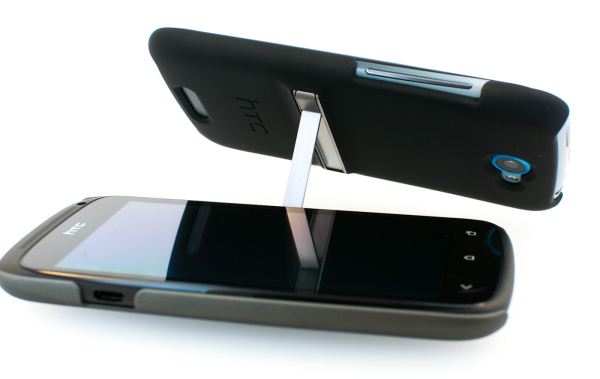

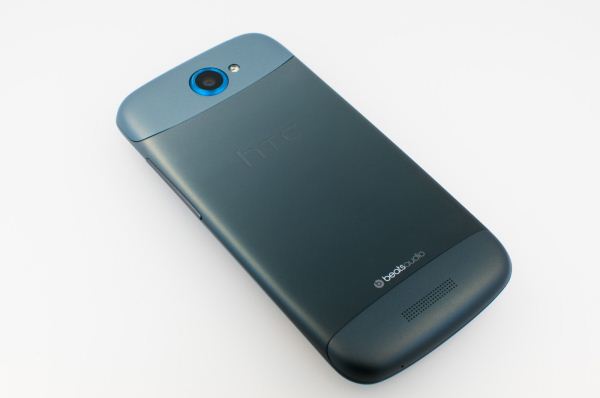

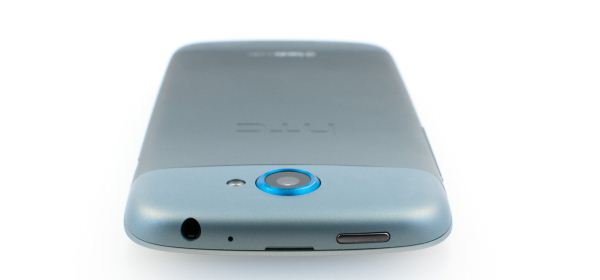
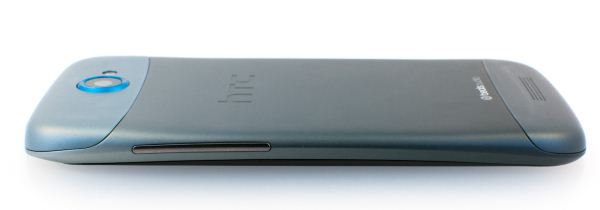
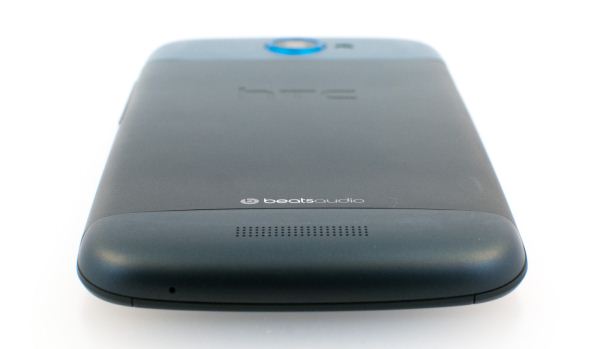
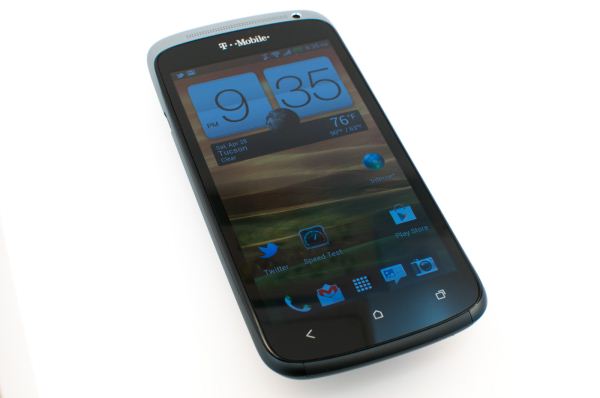
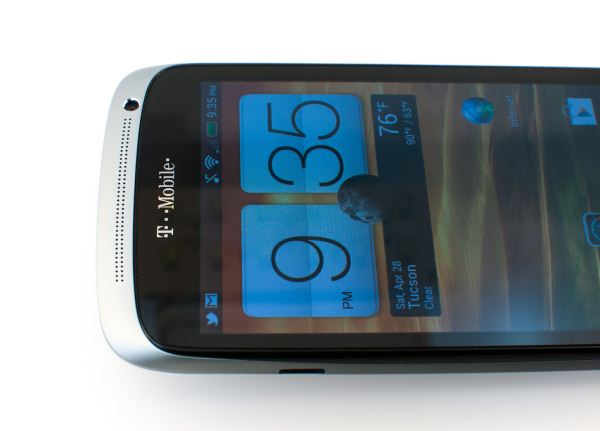
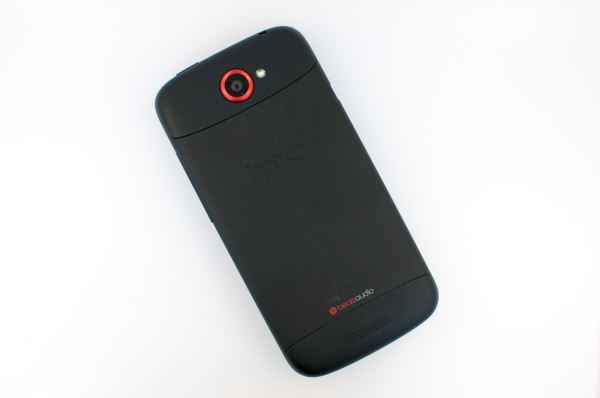






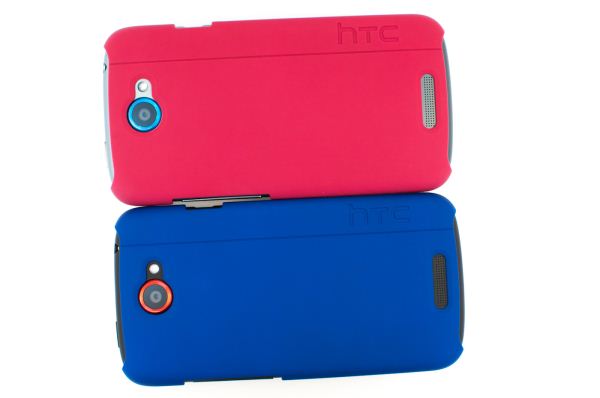
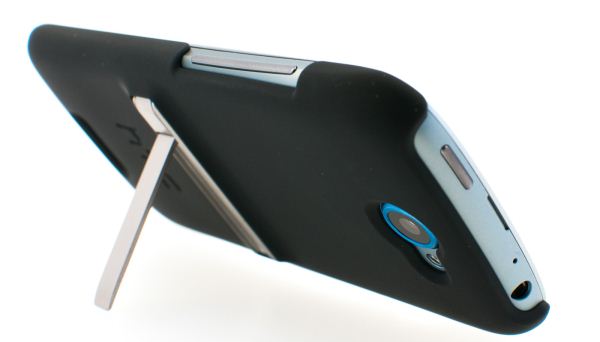
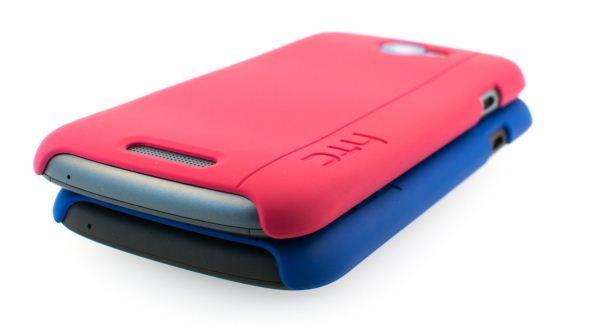














97 Comments
View All Comments
michael2k - Tuesday, July 17, 2012 - link
How is the coming on 10 months old iPhone 4S still getting some of the best battery life?What is going on in Android land?
GrizzledYoungMan - Tuesday, July 17, 2012 - link
Faster processors + LTE.Next.
ltcommanderdata - Tuesday, July 17, 2012 - link
I don't think it's that simple. Yes these recent Android phones have newer, faster Krait SoC which could draw more power compared to the Cortex A9 based Apple A5 in the iPhone 4S, however Krait has the advantage of the latest 28nm process to offset this while the A5 is still on the now more than 3 years old Samsung 45nm process. While the CPU portion of newer SoCs is faster than the A5, the A5's GPU is still faster than the GPUs in every other SoC except the recent Exynos 4412. The A5 is also known to be a large die, high transistor design, which won't do it any favours in reducing power consumption. I don't see a faster processor as being a clear disadvantage to battery life in recent Android phones compared to the iPhone 4S.LTE's contribution also probably isn't huge considering these battery tests are specifically done on 3G and WiFi allowing the LTE portion of the baseband to remain idle and power-gate. While hardware choice contributes, I do think software plays a role since Apple can spend all their time optimizing for one specific hardware configuration whereas Android manufacturers don't really have that luxury.
OCedHrt - Tuesday, July 17, 2012 - link
GPU's are power gated when you're not gaming. A powerful GPU doesn't kill battery life unless all you do is gaming.LTE kills battery life whether you use it or not. Just look at those 4 hour LTE phones from last year. The reason is because the LTE radio is a separate chip - it isn't controlled by the SoC and likely cannot be power gated.
The current generation of 28 nm w/ LTE on chip does have much better battery life - however with Android's multitasking, background syncing, Android simply isn't going to get longer battery life than iPhone 4s unless you turn it all off - and you can turn it off.
Then, as many iPhone 4s users will tell you, many of them also get shitty battery life - it probably depends even more so on how you use it.
amdwilliam1985 - Tuesday, July 17, 2012 - link
"Then, as many iPhone 4s users will tell you, many of them also get shitty battery life - it probably depends even more so on how you use it."Totally agreed, a coworker here with iPhone 4 has battery drained from ~85% to ~55% overnight in "standby" mode.
My SGS2 can go through 2 normal days easily now that I enabled wifi calling and using edge(~10k/s, it's more than enough for texting and syncing).
OCedHrt - Tuesday, July 17, 2012 - link
My One S's wifi calling drains more battery than 3G with strong signal.leexgx - Wednesday, July 18, 2012 - link
what stands out is how can the Motorola Droid RAZR Maxx have such poor web 3G browsing (unless the USA version test was done with LTE then i would cida under stand then) and Wifi Hotspot Battery timethat seems impossible with the 3200mha bat at its disposal i cant see how them results are correct for that phone
what also surprises me is How you manage to get most of these phones to last more then 4-5hrs of constant use (that lacks an secondary Clip on battery like i just got for my HTC One X or an bigger battery like i had for my HTC Desire phone) any phone i see cant seem to last the day of Light use half an day if used in the day unless power is supplied in the day
one thing i hate about the HTC one X an little is Power button really could do with been on the side like the Samsung S3 (phone is to long for 1 hand power button at the top) not sure if its me but phone seems to have been made for Left handed users, the answer and hangup icons have been switched (answer should be on the left and hang up should be on the right) sure that's how my HTC desire had it (guess i should turn on on before i look dumb :) )
other thing as well WiFi and Data go into Forced power saving mode after midnight to about 8am (it turns Wifi off and data Off Even if its Plugged into power after 15 mins screen off, comes back on screen comes on)
OCedHrt - Wednesday, July 18, 2012 - link
I easily get 5+ hours of constant use on my One S. The screen uses up most of the battery, and the on time is always over 5 hours. Sometimes more than 6.name99 - Tuesday, July 17, 2012 - link
Was the coworker using Skype?Skype is notorious for draining the battery rapidly, even while in the background. It's one of the few apps that CAN do so because it's a VoIP app so gets background time (and it basically proves Apple's point that if you allow background apps time, they WILL be written by crappy engineers and they WILL do a crappy job.)
Without wanting to make a big deal about it, I'd point out that under normal circumstances (ie Skype NOT running in the background) my iPhone4 drains by around 5% or less overnight. With Skype running it will drain by 30% or so --- which basically matches what your co-worker was seeing.
OCedHrt - Wednesday, July 18, 2012 - link
Skype is pretty crappy, but there are other, better, VoIP apps available on Android.